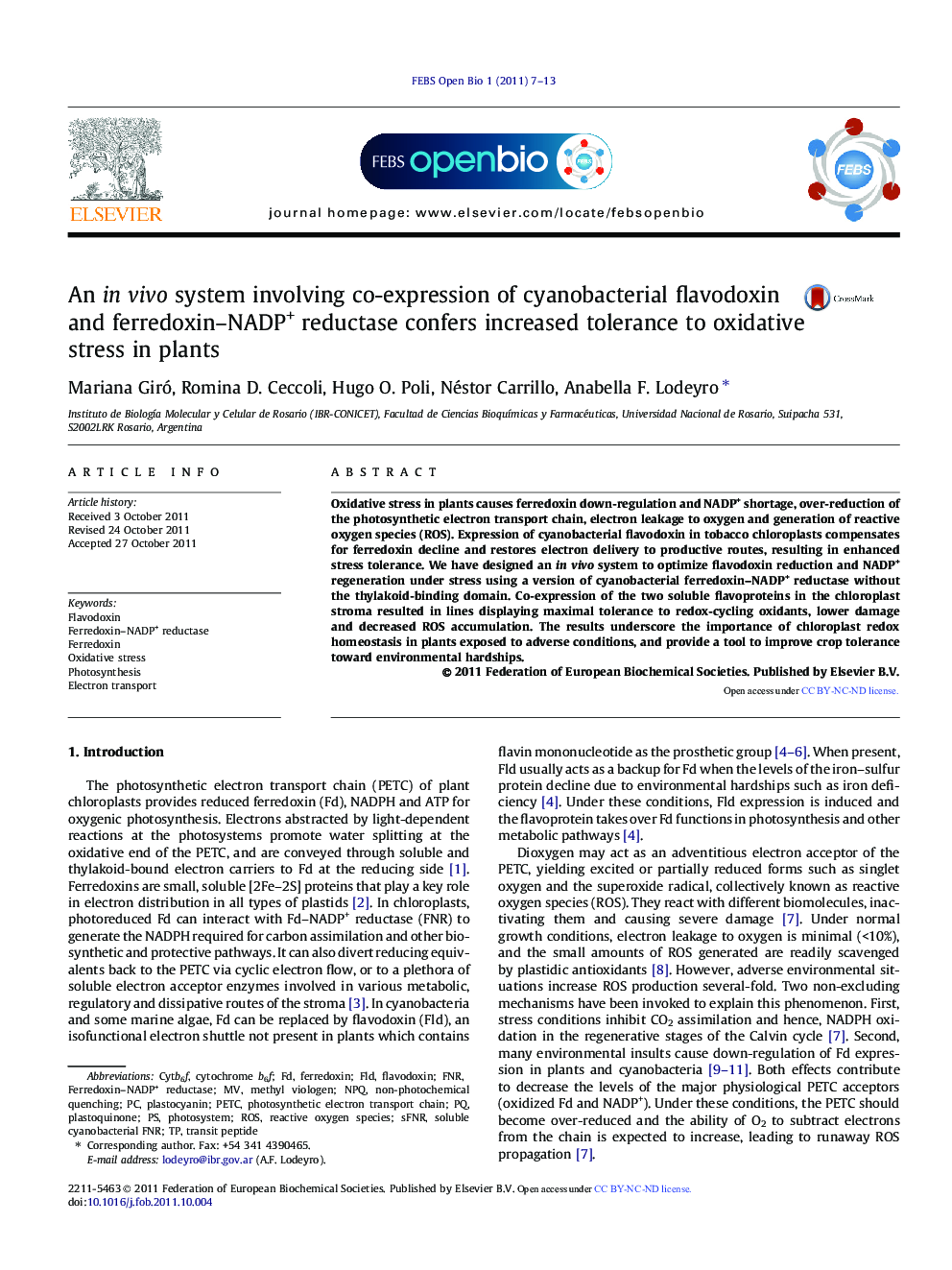| Article ID | Journal | Published Year | Pages | File Type |
|---|---|---|---|---|
| 1981888 | FEBS Open Bio | 2011 | 7 Pages |
Oxidative stress in plants causes ferredoxin down-regulation and NADP+ shortage, over-reduction of the photosynthetic electron transport chain, electron leakage to oxygen and generation of reactive oxygen species (ROS). Expression of cyanobacterial flavodoxin in tobacco chloroplasts compensates for ferredoxin decline and restores electron delivery to productive routes, resulting in enhanced stress tolerance. We have designed an in vivo system to optimize flavodoxin reduction and NADP+ regeneration under stress using a version of cyanobacterial ferredoxin–NADP+ reductase without the thylakoid-binding domain. Co-expression of the two soluble flavoproteins in the chloroplast stroma resulted in lines displaying maximal tolerance to redox-cycling oxidants, lower damage and decreased ROS accumulation. The results underscore the importance of chloroplast redox homeostasis in plants exposed to adverse conditions, and provide a tool to improve crop tolerance toward environmental hardships.
Graphical abstractFigure optionsDownload full-size imageDownload as PowerPoint slideHighlights▸ Expression of cyanobacterial flavodoxin in tobacco plants confers increased tolerance to oxidative stress. ▸ Expression of ferredoxin–NADP+ reductase in tobacco does not provide oxidative stress tolerance. ▸ The presence of ferredoxin–NADP+ reductase significantly increases oxidative stress tolerance conferred by flavodoxin in transgenic plants. ▸ Stress tolerance in plants depends on chloroplast redox homeostasis.
